Headstones reinstated at children's home graveyard
- Published
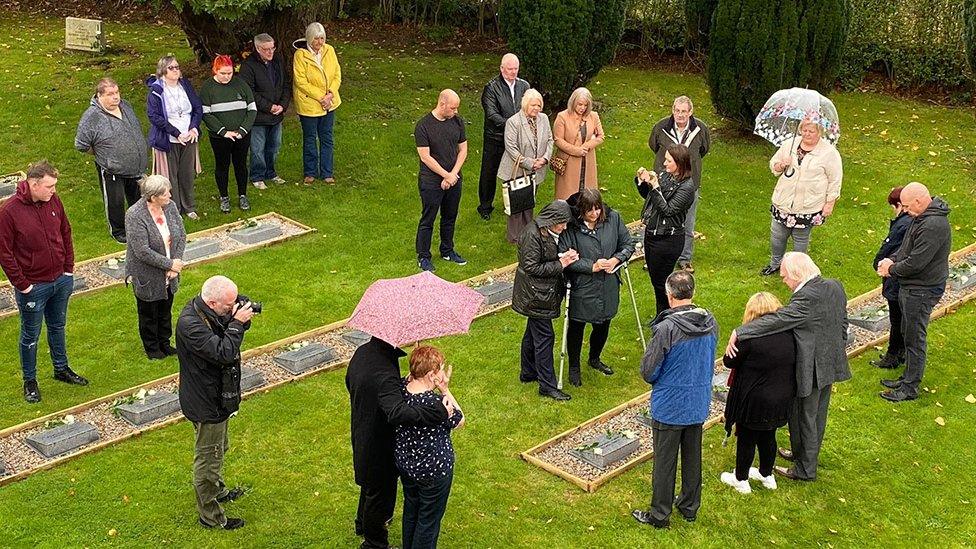
Former children's home residents and abuse survivors have gathered at the end of a campaign to reinstate headstones for hundreds of children who lay in unmarked graves.
A white rose was laid in remembrance for each of the 335 children buried in Quarriers village in Renfrewshire.
They were laid to rest in the village's Nittinghill Graveyard from 1888 until 1971 but their gravestones were removed in the 1960s.
Former resident Sandy Smith has led a two-year campaign to reinstate the headstones.
The campaign began when it emerged that 80 headstones marking the graves of children who died while they lived at Quarriers children's home near Bridge of Weir had inexplicably disappeared.
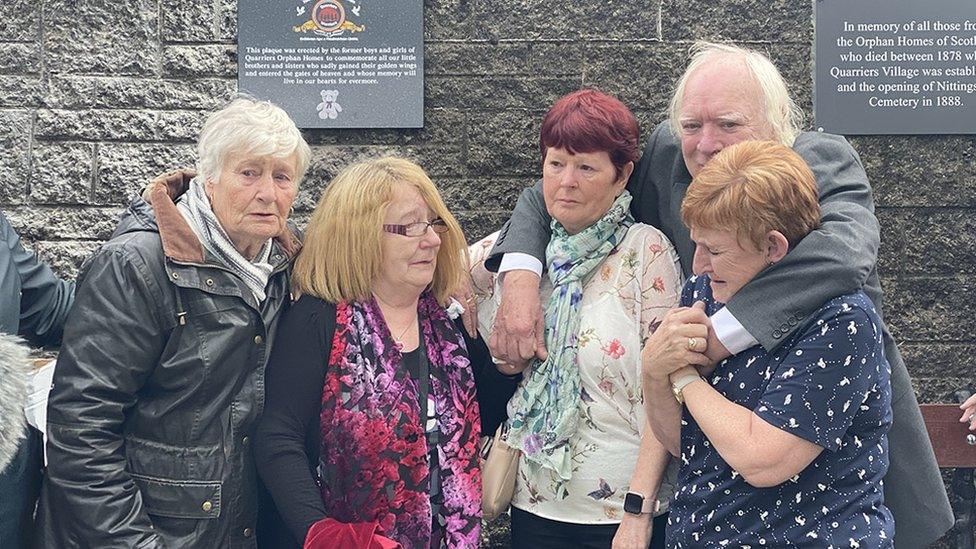
A plaque was unveiled in memory of their "brothers and sisters" who lie buried in the cemetery
Mr Smith believes those children would still be lying in unmarked graves today if he hadn't returned six years ago to the place where he spent his childhood.
Quarriers is one of several organisations investigated in the Scottish Child Abuse Inquiry about abuse inflicted upon some children in its care.
A resident of Quarriers from the age of five, and a victim of abuse, Mr Smith struggled with his childhood experiences.
After an attempt to take his own life and the breakdown of his marriage, he reconnected with his past - and other children from Quarriers - through an online forum in 2013.
He found a friend he first met in at the children's home in 1956. He had not seen her since she was removed from the home a few years later.
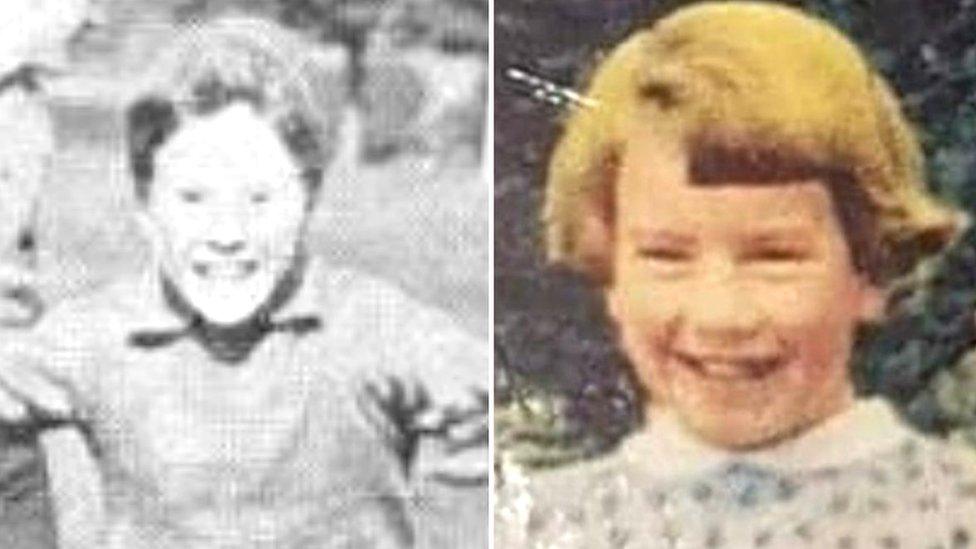
Sandy Smith and Jayne Savery when they were residents at Quarrier's as children
After meeting up with Jayne Savery, they became a couple and revisited the site of the home in 2013 in a bid to relive some happy memories.
They were shocked to find that when they entered the cemetery, the graves they remembered were gone.
Ms Savery said: "Only a Quarriers child would have noticed that they were removed. As a little girl I used to play hopscotch using the gravestones as stepping stones as at that time they were flat on the ground."
Mr Smith was angry and upset.
He said: "Over time, it preyed on my mind and eventually in 2017, I called Quarriers.
"I asked why they had been removed but no one could answer that. They promised the stones would be replaced by March or April 2018."
In January 2018, the Quarriers charity apologised "for any distress caused" over the removal of headstones from Nittingshill cemetery and said it had plans to have them reinstated.
However, this took some time, with rows of stones gradually reinstated over the course of nearly two years.
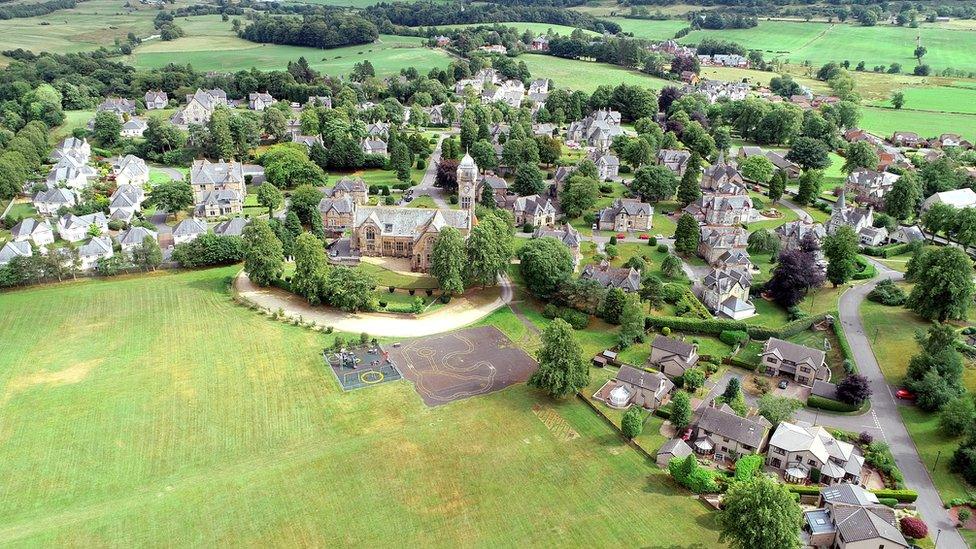
Quarrier's village with Mount Zion church at the centre
The last headstone was placed at the cemetery in August.
On Thursday, the stones were dedicated in a ceremony organised by Quarriers. A total of 155 grave markers now show all the names of children buried there.
Mr Smith's support group, Quarriers Warriors, organised a memorial service on Sunday to mark the return of the headstones.
He said: "Now these children can be remembered once more. They will be rejoicing in heaven knowing we did not forget them and they will always be remembered."
Alice Harper, chief executive of Quarriers said: "It was extremely important to Quarrier's to put grave markers in place.
"Having been approached by a group representing former residents requesting our support, we made an early commitment to putting grave markers in place as we agreed it was the right thing to do.
"Until now, children had been remembered and recognised with a plaque stating their name, age and year of death."
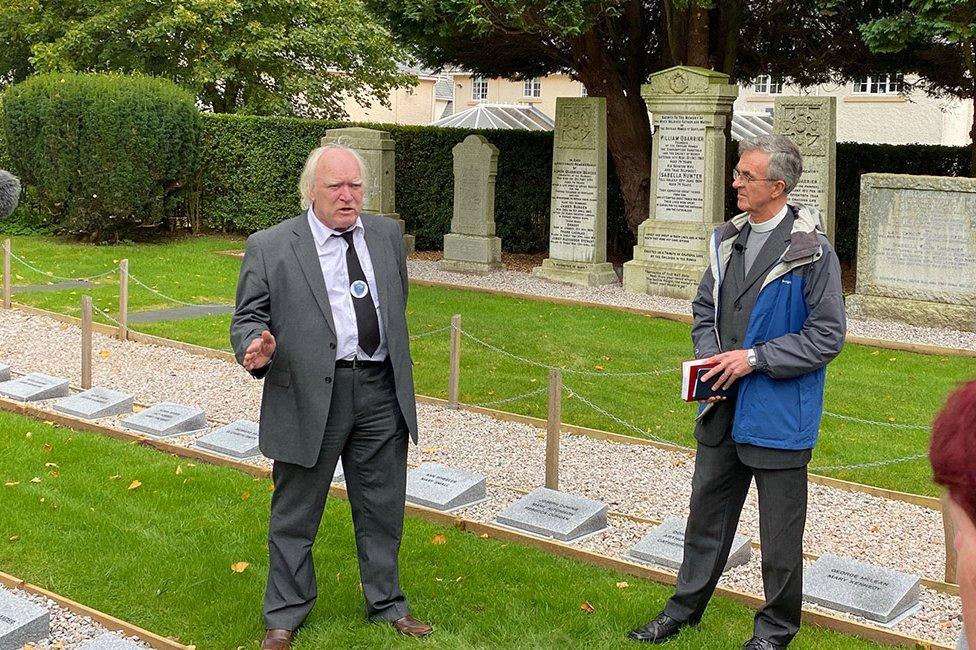
Sandy Smith has led a two-year campaign to reinstate the gravestones
The stories of the first three children laid to rest at Quarrier's Nittingshill cemetery were shared at the dedication service on Thursday.
Ten years after the village was established, William Sinclair, William Kean, and Sarah McLeod were buried there.
Orphaned at the age of three, William Sinclair went to Quarrier's in December 1887 but died just four months later.
William Kean, the eldest of four children, arrived aged nine in April 1887.
Their father, a brewery carter, expressed a strong desire for the children to be placed at Quarrier's. William died in May 1888 after a short illness. His siblings were migrated to Canada.
Sarah McLeod was the middle child of John, a baker from Skye and Mary from Dingwall.
Sarah came to Quarrier's in 1887 along with sister Bella, 10, and brother Archie, 5. Sarah died of heart disease in May 1888. Bella returned to her mother and Archie was migrated to Canada.

Quarriers - the orphans' village built on Victorian philanthropy
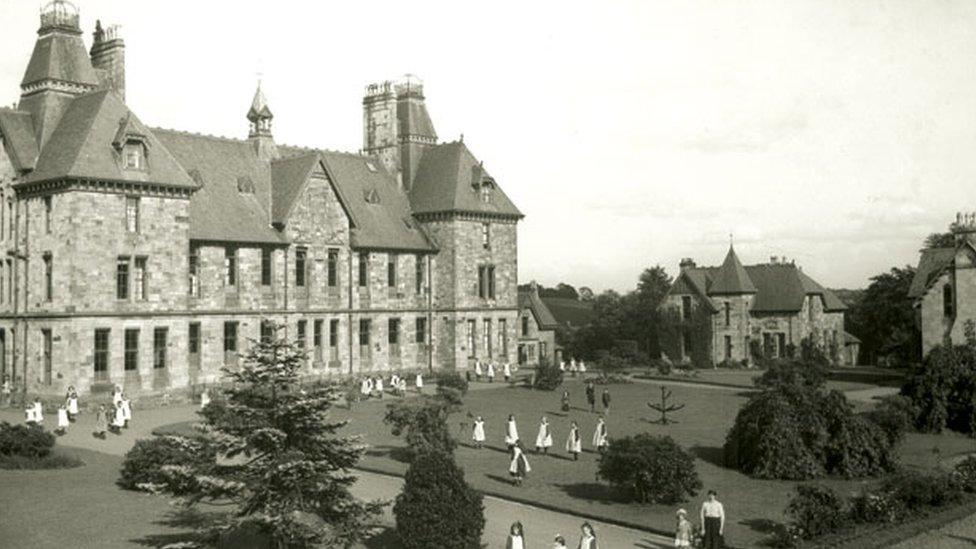
The central building at Quarrier's village in the 1920s
Quarriers Village was established in 1878 by philanthropist William Quarrier, a successful merchant who had started his working life at the age of seven as a pin maker.
His charity was known as Orphan Homes of Scotland and was changed to Quarriers Homes in 1958.
By the 1890s his "children's village" included 34 "cottages" a school and even a fire station - based around Mount Zion Church and Nittingshill Cemetery.
Children who were cared for by Quarriers could be buried at the cemetery, alongside William Quarrier, his family and local residents.
From 1888 until 1971, 335 children were buried in Nittingshill Graveyard.
Mount Zion Church is now a residential property.
The Quarriers charity continues the work of the former homes and is based within the village.
- Published26 January 2018

- Published2 November 2018
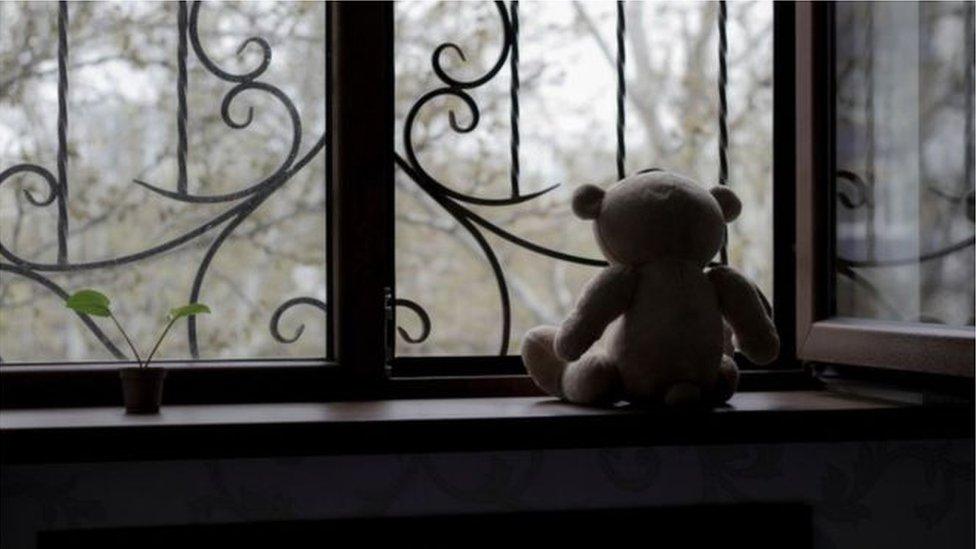
- Published13 September 2017
